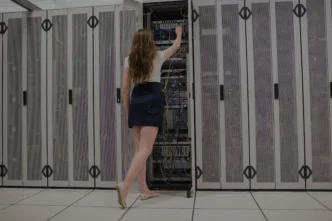Cybersecurity extends far beyond deploying firewalls, antivirus software, and intrusion detection systems. The real challenge lies in communication—the clear, consistent, and effective dialogue between technical teams, management, and end-users. In an era where cyber threats evolve at breakneck speed, the misalignment between security technology and the human element is emerging as the most critical vulnerability.
The Misunderstood Element: Communication in Cybersecurity
When organizations invest heavily in state-of-the-art cybersecurity tools, they often overlook the equally important necessity of a robust communication framework. Effective communication ensures that all stakeholders understand the risks, mitigation strategies, and the rationale behind security investments. This holistic view is crucial for aligning technical measures with business objectives.
Bridging the Gap Between Technical and Non-Technical Stakeholders
Modern cybersecurity challenges demand that complex technical details be translated into clear, actionable insights for executives, legal teams, and employees. Without proper communication:
- Misaligned Priorities: Technical teams might focus solely on threat detection while executives concentrate on budgetary constraints, leading to misdirected resources.
- Delayed Incident Response: Inefficient communication channels can delay the reporting and response to breaches, amplifying damage.
- Policy Misinterpretation: Vague or overly technical security policies may result in non-compliance by staff, inadvertently creating vulnerabilities.
A study by the Ponemon Institute reveals that poor communication contributes significantly to prolonged breach containment times and increased recovery costs. Aligning communication across all levels of the organization is essential to ensure that cybersecurity measures are not only implemented but understood and maintained over time.
The Communication-Technology Paradox
The industry often touts technological sophistication as the cornerstone of cybersecurity, but advanced systems are ineffective if they are not integrated into a broader context of organizational communication. The paradox here is that even the most cutting-edge technology can fail if the message isn’t clear and shared uniformly.
Integrating Communication with Security Infrastructure
Modern security operations centers (SOCs) now recognize that communication platforms must work in tandem with technical solutions. For example:
- Automated Alerts and Human Oversight: While automated alerts are crucial for early detection, they require immediate human evaluation and a clear protocol for escalation.
- Incident Response Playbooks: These documents must be written in language that both technical and non-technical personnel can understand. Regular drills and updates ensure that every team member is aware of their role during a security incident.
- Unified Dashboards: Integrating data from disparate systems into a single interface helps in translating technical alerts into actionable insights for decision-makers.
By embedding communication strategies within the technical framework, organizations can better manage risks and respond swiftly to emerging threats.
The Role of Leadership in Cybersecurity Communication
Leadership plays a pivotal role in establishing an environment where cybersecurity communication is prioritized. Leaders must foster a culture that values transparency and continuous learning, ensuring that every employee—from the C-suite to entry-level staff—understands the importance of cybersecurity protocols.
Establishing a Security-First Culture
To bridge the communication gap, senior management should:
- Champion Cybersecurity Initiatives: Leaders should visibly support cybersecurity programs, reinforcing their importance through regular updates and involvement in training sessions.
- Regular Briefings and Reports: Transparency in reporting on security metrics and threat landscapes helps demystify cybersecurity for non-technical stakeholders.
- Cross-Departmental Collaboration: Encouraging collaboration between IT, HR, legal, and communications teams ensures that policies and procedures are uniformly understood and executed.
An effective leadership strategy not only improves communication but also instills a proactive attitude toward cybersecurity, reducing the chances of a security incident spiraling out of control.
Training and Education: The Foundation of Communication
Effective cybersecurity communication requires that all personnel are well-informed about potential threats and the protocols in place to address them. Regular training sessions and educational programs are crucial for maintaining a high level of security awareness across the organization.
Customizing Training for Diverse Audiences
Not all employees require the same depth of technical knowledge. Tailoring training programs based on roles can significantly improve comprehension and adherence:
- Technical Teams: Deep dives into threat modeling, network security protocols, and incident response strategies are essential.
- Non-Technical Staff: Simplified overviews focusing on common phishing tactics, social engineering risks, and safe browsing practices can be more beneficial.
- Management: Strategic overviews that focus on risk management, budget considerations, and compliance requirements are critical for decision-makers.
Interactive training modules, simulations, and regular refresher courses help reinforce the importance of cybersecurity practices and ensure that the message is consistently communicated across the organization.
The Impact of Communication Failures on Cybersecurity
The consequences of poor communication in cybersecurity can be severe. Communication failures not only jeopardize data integrity but also erode trust between stakeholders, making it difficult to mount an effective defense against cyberattacks.
Case Studies of Communication Breakdowns
Recent high-profile breaches highlight the catastrophic effects of communication lapses:
- Data Breaches in Financial Institutions: In some cases, delays in relaying breach notifications from technical teams to executive leadership resulted in prolonged exposure, causing significant financial losses and reputational damage.
- Supply Chain Attacks: When vendors and partners are not adequately informed about security protocols, vulnerabilities in the supply chain can be exploited, leading to widespread disruptions.
- Ransomware Attacks: Inefficient communication during the onset of ransomware attacks often results in delayed responses, allowing attackers to encrypt critical data and demand exorbitant ransoms.
Each of these scenarios underscores that cybersecurity’s real challenge is communication, not just technology. The ability to quickly and clearly communicate threats, responses, and recovery strategies is as important as having the right tools in place.
Technical Strategies for Enhancing Communication
Advancements in technology offer several avenues for improving cybersecurity communication. By leveraging modern tools and methodologies, organizations can bridge the gap between technical and non-technical teams.
Unified Communication Platforms
Integrating communication tools with cybersecurity systems creates a streamlined process for incident reporting and response. Key features include:
- Real-Time Collaboration: Tools that facilitate instant messaging, video conferencing, and shared dashboards help teams to coordinate effectively during incidents.
- Automated Reporting: Systems that automatically generate reports and alerts can reduce the burden on technical teams and ensure that critical information is disseminated promptly.
- Incident Management Software: Platforms that integrate ticketing systems with cybersecurity alerts allow for a structured approach to managing and resolving incidents.
Data Visualization and Reporting Tools
Data visualization plays a crucial role in translating complex security metrics into understandable formats. Tools that generate visual dashboards can help:
- Highlight Trends: Graphs and charts can reveal patterns in cyber threats, making it easier for non-technical stakeholders to grasp the severity of potential risks.
- Simplify Metrics: Visual representations of data breaches, threat vectors, and response times help in quickly communicating the impact of security incidents.
- Support Decision-Making: Clear and concise data presentations aid leadership in making informed decisions regarding investments in cybersecurity.
By implementing these technical strategies, organizations can ensure that critical security information is communicated efficiently, enabling a more coordinated and effective response to threats.
Regulatory and Compliance Communication
In addition to internal communication challenges, organizations must navigate an increasingly complex landscape of regulatory requirements. Effective communication with regulatory bodies and adherence to compliance standards are vital components of a robust cybersecurity strategy.
Navigating Regulatory Frameworks
Recent developments in data protection laws, such as the General Data Protection Regulation (GDPR) in Europe and the California Consumer Privacy Act (CCPA) in the United States, have heightened the need for transparent communication. Organizations must ensure:
- Timely Breach Notifications: Regulations often mandate that breaches be reported within strict time frames. Clear communication channels facilitate compliance with these deadlines.
- Accurate Reporting: Detailed and precise documentation of security measures, incidents, and responses is crucial for audits and regulatory reviews.
- Stakeholder Engagement: Communicating regulatory requirements to all levels of the organization helps ensure that every employee understands their role in maintaining compliance.
Regulatory compliance is not just a legal obligation—it also builds trust with customers and partners by demonstrating a commitment to protecting sensitive data.
The Future of Cybersecurity Communication
As cyber threats continue to evolve, so too must the strategies for effective communication. Future advancements are likely to include more integrated platforms and AI-driven communication tools that can predict, alert, and guide responses in real time.
AI and Machine Learning in Communication
Artificial Intelligence (AI) and Machine Learning (ML) are transforming how organizations handle cybersecurity communication. These technologies can:
- Predict Threats: By analyzing historical data and current trends, AI can forecast potential vulnerabilities and alert teams before incidents occur.
- Automate Alerts: Machine learning algorithms can filter out false positives and prioritize alerts based on severity, ensuring that the most critical threats are communicated immediately.
- Enhance Decision-Making: AI-powered dashboards can provide real-time analytics, helping both technical and non-technical teams make data-driven decisions.
Incorporating AI and ML not only enhances the technical capabilities of cybersecurity systems but also streamlines communication, making it more precise and actionable.
Embracing a Holistic Security Model
The future of cybersecurity will depend on adopting a holistic approach where communication is seamlessly integrated with technology. This model involves:
- Cross-Functional Teams: Establishing teams that include members from IT, security, legal, and communications ensures that diverse perspectives inform decision-making.
- Continuous Learning: Regular updates, training, and simulations keep everyone prepared for emerging threats.
- Adaptive Communication Strategies: As the threat landscape evolves, so too must the methods of communication, with a focus on agility and responsiveness.
Organizations that invest in these forward-thinking strategies will be better positioned to handle the dynamic challenges of cybersecurity.
Cybersecurity’s Real Challenge: Communication, Not Just Technology
The focus keyphrase Cybersecurity’s Real Challenge Is Communication, Not Just Technology encapsulates the essence of the ongoing struggle in the field. This phrase underlines the fact that while technical defenses are critical, their effectiveness is significantly diminished without the corresponding communication strategies. The integration of communication at every level—technical, managerial, and regulatory—is imperative for a resilient cybersecurity posture.
Conclusion
Addressing cybersecurity’s vulnerabilities demands more than the latest technological solutions. It requires a cultural and procedural shift towards robust communication practices that bridge the gap between technology and human factors. From leadership commitment and comprehensive training to innovative AI-driven tools, the future of cybersecurity lies in ensuring that every stakeholder is informed, engaged, and prepared.
Organizations must recognize that cybersecurity’s real challenge is communication, not just technology. By fostering an environment where clear and effective communication is prioritized, companies can mitigate risks, improve incident response, and build a resilient defense against ever-evolving cyber threats.














